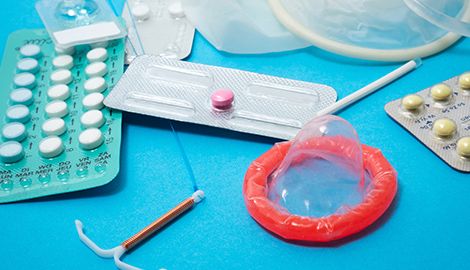Family Planning and Birth Control

Family planning means that you have the power to decide when you want to have another child, or not. Having access to and using sexual health information and birth control can help ensure that you only become pregnant when you are ready.
Benefits of Family Planning
- Reaching education and career goals on your timeline. Waiting to have another child until you are ready can mean more time for you to take advantage of educational and job opportunities.
- Having more time to plan your finances. A surprise pregnancy might mean a greater strain on your wallet than a planned pregnancy. Waiting until you are ready can mean more time to find a job or save up before baby arrives.
- Having a healthier, longer recovery from childbirth. Medical professionals recommend that mothers wait at least 1.5 years after giving birth before getting pregnant again. This can help prevent mothers and their babies from developing health problems.
About Birth Control
Birth control (also known as contraception) is designed to prevent pregnancy using hormones and barrier methods, such as condoms. A few things to know or keep in mind:
- Birth control works! Correctly and consistently using birth control is very effective for preventing pregnancy if you are sexually active or think you may soon have sex.
- Side effects vary from person to person. Depending on the method, some (but not all) women might experience side effects but these usually go away with time.
- You can switch methods. If you are having side effects on one method, another one might be better for you. Sometimes you have to try more than one method until you find one that is right for you.
- Abstinence, or not having sex, is the only 100% effective way to prevent pregnancy. If you choose to not be abstinent, there are many birth control method options available to you.
How to Decide on a Birth Control Method
There are many birth control methods to choose from. These are the most effective methods:
- Intrauterine device (IUD)
- Implant
- Sterilization (“tying tubes” or vasectomy)
- Not having sex (abstinence)
These are still very effective if used correctly, but somewhat less than the ones above:
- Injection (“the shot”)
- Oral contraceptive (“the pill”)
- Patch
- Vaginal contraceptive ring ("the ring")
- Diaphragm or cervical cap, with spermicide
- Contraceptive sponge
- Condoms (latex or polyurethane)
Some things to consider as you pick a method:
- If you want to wait between 3-10 years before having another child without needing to remember to take birth control every day, week or month, then the implant or IUD might be right for you.
- If you are okay with hormones, are good at remembering to take birth control, and do not want something that will stay in your body for a few years, then oral contraceptives, the patch, injection, or a vaginal contraceptive ring might work well for you.
- If you want to avoid hormones and their sides effects, the diaphragm, cervical cap, contraceptive sponge, condoms, or the copper IUD might be better options for you.
- Remember - only condoms prevent sexually transmitted infections (STIs). You can use condoms along with these other methods to prevent STIs and to provide extra protection against pregnancy.
Emergency contraception
Emergency contraception (such as Plan B® or Ella®) is not a regular method of birth control, but it can be used after no birth control was used during sex, or if the birth control method failed, such as if a condom broke. The most common form is emergency contraceptive pills, which can be taken up to 5 days after unprotected sex. However, the sooner the pills are taken, the better they will work. Some emergency contraceptive pills are available over the counter--you can buy them even before you need them.
Condoms and STI Prevention
Dual contraception is using two methods of contraception to prevent pregnancy at the same time. Condoms are the only birth control method that can help prevent most sexually-transmitted infections (STIs) such as HIV, chlamydia, and gonorrhea. Left untreated, some STIs can be very harmful to your health, can cause infertility, and, if you’re pregnant, can pose serious health risks to your baby. People who are sexually active should get tested yearly or immediately if they develop symptoms. Getting tested is the only way to know if you have an STI.
Accessing Birth Control
You can get birth control for free or at reduced price with most insurance plans. If you need more help deciding on a birth control method, make an appointment with your doctor or a professional at a reproductive health clinic – they can answer questions you might have and make recommendations based on your needs and health. You can also learn more about these different methods (including emergency contraception) and how they are used in the Helpful Resources below.
Helpful Resources
- Bedsider.org: This website includes a fun, interactive tool to help you choose the birth control method that’s best for you. It includes information on the effectiveness of each method.
- Planned Parenthood: This is a nationwide network of health centers that offers affordable sexual reproductive services and resources such as, STI testing, birth control, and free condoms
- Title X: These clinics are federally funded to provide low-to-no cost reproductive health care, including STI testing and contraception.
The information in this article is intended to be used for educational purposes only. It is not medical advice. Always consult a doctor or other healthcare professional when making decisions about your health.